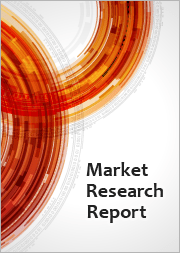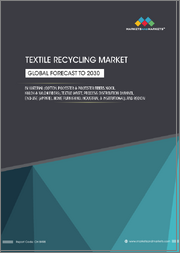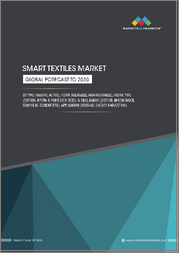
|
시장보고서
상품코드
1423756
코튼 시장 예측(-2030년) : 제품 유형별, 최종사용자별, 지역별, 세계 분석Cotton Market Forecasts to 2030 - Global Analysis By Product, Type (Upland Cotton, Pima Cotton, Organic Cotton, Genetically Modified Cotton and Other Types), End User and By Geography |
||||||
세계의 코튼 시장 규모는 2023년에 419억 8,000만 달러에 달하며, 예측 기간 중 CAGR 4.7%로 성장하며, 2030년에는 579억 2,000만 달러에 달할 것으로 예측되고 있습니다.
세계에서 중요한 작물인 면화는 면화 식물(Gossypium)의 푹신한 씨앗 섬유에서 얻어지는 천연섬유입니다. 다재다능한 특성으로 인해 널리 재배되고 있으며, 면은 섬유제품, 의류, 산업용 제품에 사용됩니다. 코튼은 통기성이 뛰어나고 쾌적하다는 평가를 받고 있습니다. 면화 재배에는 온난한 기후와 풍부한 물이 필요합니다. 목화는 배수가 잘되고 비옥한 토양에서 자란다.
인도 중앙은행에 따르면 2022 회계연도 인도의 면화 및 면제품 수출액은 1조 1,400억 인도 루피(139억 4,000만 달러) 이상이었다고 합니다. 이는 7,260억 인도 루피(88억 달러)였던 지난 회계연도에 비해 거의 5,860억 인도 루피(51억 달러)가 증가한 것입니다.
전 세계에서 증가하는 섬유제품 수요
섬유 산업이 신흥 국가을 중심으로 전 세계에서 확대되고 있는 가운데, 섬유 생산의 기초 원료인 면화 수요가 급증하고 있습니다. 이러한 수요 증가는 인구 증가, 도시화, 소비자 선호도 변화 등의 요인에 영향을 받고 있습니다. 그 결과, 면화 시장은 섬유 부문 증가하는 수요를 충족시켜야 한다는 압박을 받고 있으며, 이는 세계 면화 무역과 생산의 역동성을 형성하고 있습니다.
병해충 발생
해충과 병충해 발생은 농가가 해충 방제 및 병충해 관리에 투자하기 때문에 생산 비용 증가로 이어집니다. 면화 작물이 병충해에 취약하기 때문에 공급이 감소하여 세계 면화 가격에 영향을 미칩니다. 또한 화학적 개입의 필요성은 환경에 대한 우려를 높이고 소비자의 인식에도 영향을 미칩니다. 전반적으로 해충과 병충해의 압력은 면화 시장에 불확실성을 가져와 전 세계 면화 농가의 생산 효율성과 경제적 실행 가능성에 영향을 미칩니다.
생명공학 기술의 발전이 가속화되고 있습니다.
생명공학의 발전은 면화 수확량, 섬유 품질, 해충에 대한 저항력을 향상시킵니다. 생산과 지속가능성을 향상시키는 기술 혁신에는 가뭄 저항성 및 해충 저항성과 같은 기능을 강화한 유전자 변형 면화 유형이 포함됩니다. 생명 공학에 의해 개발된 특정 환경 조건에 적합한 면화는 더 나은 적응성과 자원 효율성을 보장합니다. 이는 면화 부문을 더욱 탄력적이고 효과적으로 만들어 세계 수요에 대응할 수 있도록 돕습니다.
합성섬유와의 경쟁
폴리에스터나 나일론과 같은 합성섬유는 면의 바람직한 품질을 저렴한 가격으로 모방하는 경우가 많아 면제품에 대한 수요가 감소하고 있습니다. 합성 섬유는 내구성과 비용 효율성 등 우수한 특성을 가지고 있습니다. 또한 기술 발전으로 합성 섬유의 성능이 지속적으로 향상되고 있으며, 면화 생산자들은 시장 점유율을 유지하기 위해 점점 더 많은 어려움을 겪고 있습니다. 이러한 경쟁은 시장 성장을 저해하고 있습니다.
COVID-19의 영향
COVID-19는 전 세계 면화 시장에 큰 영향을 미쳐 공급망에 혼란을 일으켜 섬유 제품 수요가 감소했습니다. 이동 제한은 면화 수확과 운송을 방해하여 노동력 부족을 일으켰습니다. 의류에 대한 소비 지출이 감소함에 따라 면화 가격이 변동했습니다. 또한 세계 무역의 혼란과 경제의 불확실성은 면화 시장에 더 많은 영향을 미쳤습니다. 각국이 점차 회복되는 가운데 면화 산업은 소비자 행동의 변화와 공급망 조정과 같은 과제를 계속 극복하여 시장 역학에 영향을 미치고 있습니다.
오가닉 코튼 부문은 예측 기간 중 가장 큰 시장으로 성장할 것으로 예상
유기농 면화 분야는 유리한 성장세를 보일 것으로 추정됩니다. 유기농 면화는 합성 농약, 제초제, 유전자 변형 작물을 사용하지 않고 재배되는 지속가능하고 친환경적인 면화입니다. 자연적 방식으로 재배되기 때문에 환경에 미치는 영향을 최소화하면서 토양의 건강성과 생물 다양성을 증진시킵니다. 또한 유해한 화학물질이 함유되어 있지 않기 때문에 저자극성이며 소비자에게도 안전합니다. 유기농 면화를 선택하면 보다 지속가능하고 윤리적인 접근 방식을 지원하고, 건강한 지구에 기여하며, 패션 및 섬유 산업에서 책임감 있는 소비자 선택을 촉진할 수 있습니다.
섬유 산업 부문은 예측 기간 중 가장 높은 CAGR을 보일 것으로 예상
섬유 산업 부문은 다재다능하고 다양한 장점으로 인해 예측 기간 중 가장 높은 CAGR 성장을 보일 것으로 예상됩니다. 면은 부드럽고 통기성이 뛰어나고 흡수성이 뛰어나 의류로 편안합니다. 면직물은 내구성이 뛰어나고 염색이 용이하며 흡습성이 우수합니다. 또한 면은 저자극성이며 다양한 기후에 적합합니다. 천연섬유이기 때문에 통풍이 잘되어 피부가 거칠어질 위험을 줄입니다. 면의 적응성과 친환경적인 특성은 섬유 산업에서 면의 인기 요인 중 하나이며, 다양한 제품에서 지속가능성과 편안함을 촉진하고 있습니다.
가장 큰 점유율을 차지하는 지역
예측 기간 중 아시아태평양이 가장 큰 시장 점유율을 차지할 것으로 예상됩니다. 중국은 세계 생산 및 수출 시장의 대부분을 주도하고 있습니다. 또한 인도는 세계 최대 면화 생산국 중 하나로 전 세계 면화 생산량의 약 22%를 차지하고 있습니다. 또한 중국과 인도는 섬유 부문의 우위가 두드러지며, 섬유 부문이 자국에서 생산된 면화의 대부분을 소비하고 있습니다. 따라서 이들 주요 국가의 면화 수요 증가는 이 지역 시장 수요를 촉진하고 있습니다.
CAGR이 가장 높은 지역 :
예측 기간 중 북미가 가장 높은 CAGR을 기록할 것으로 예상됩니다. 미국은 주요 기업으로서 예측 기간 중 주요 면화 생산국 및 수출국으로서의 지위를 유지했습니다. 유전자 변형 면화 품종의 채택과 같은 기술 발전이 수율과 품질에 영향을 미쳤습니다. 북미자유무역협정(NAFTA)을 포함한 무역 정책 및 협정 또한 면화 무역의 역학에 영향을 미쳤습니다. 또한 면화 재배 관행과 성장, 국제 무역 활동의 발전은 이 지역 시장 수요를 촉진하고 있습니다.
목차
제1장 주요 요약
제2장 서문
- 개요
- 이해관계자
- 조사 범위
- 조사 방법
- 정보원
제3장 시장 동향 분석
- 촉진요인
- 억제요인
- 기회
- 위협
- 제품 분석
- 최종사용자 분석
- 신흥 시장
- COVID-19의 영향
제4장 Porter's Five Forces 분석
- 공급 기업의 교섭력
- 구매자의 교섭력
- 대체품의 위협
- 신규 진출업체의 위협
- 경쟁 기업간 경쟁 관계
제5장 세계의 코튼 시장 : 제품별
- 원면
- 면실
- 면실유
- 코튼 린터
- 기타 제품
제6장 세계의 코튼 시장 : 유형별
- 업랜드 코튼
- 피마 코튼
- 오가닉 코튼
- 유전자변형(GM) 코튼
- 기타 유형
제7장 세계의 코튼 시장 : 최종사용자별
- 섬유 산업
- 의료 산업
- 자동차 산업
- 신발 제조업체
- 패션·액세서리 브랜드
- 제지 산업
- 기타 최종사용자
제8장 세계의 코튼 시장 : 지역별
- 북미
- 미국
- 캐나다
- 멕시코
- 유럽
- 독일
- 영국
- 이탈리아
- 프랑스
- 스페인
- 기타 유럽
- 아시아태평양
- 일본
- 중국
- 인도
- 호주
- 뉴질랜드
- 한국
- 기타 아시아태평양
- 남미
- 아르헨티나
- 브라질
- 칠레
- 기타 남미
- 중동 및 아프리카
- 사우디아라비아
- 아랍에미리트
- 카타르
- 남아프리카공화국
- 기타 중동 및 아프리카
제9장 주요 발전
- 계약, 파트너십, 협업, 합병사업
- 인수합병
- 신제품의 발매
- 사업 확대
- 기타 주요 전략
제10장 기업 개요
- Cotton Corporation of India
- Fazal Group
- Loyal Textiles Mills Limited
- Oswal Group
- Vardhman Group
- Bombay Dyeing
- Armor Seed
- Damodar Group
- Unifi Inc.
- Banswara Syntex Limited
- Adani Group
- Shri Vallabh Pittie Group
- Weiqiao Textile Company Limited
- Cargill Incorporated
- Bunge Limited
- Corteva Agriscience
- Olam International
- Gokak Mills
According to Stratistics MRC, the Global Cotton Market is accounted for $41.98 billion in 2023 and is expected to reach $57.92 billion by 2030 growing at a CAGR of 4.7% during the forecast period. Cotton, a vital global crop, is a natural fiber derived from the fluffy seed fibers of the cotton plant (Gossypium). Widely cultivated for its versatility, cotton is used in textiles, apparel, and industrial products. It is valued for its breathability and comfort. Cotton cultivation demands a warm climate and ample water. It thrives in well-drained soil with good fertility.
According to the Reserve Bank of India, in the fiscal year 2022, the value of cotton and cotton products exported from India was over INR 1140 billion (USD 13.94 billion). This increased by almost INR 586 billion (USD 5.1 billion) compared to the previous financial year, which accounted for INR 726 billion (USD 8.8 billion).
Market Dynamics:
Driver:
Escalating global demand for textiles
As the textile industry continues to expand worldwide, particularly in emerging economies, the need for cotton, a fundamental raw material in textile production, has surged. This heightened demand is influenced by factors such as population growth, urbanization, and changing consumer preferences. Consequently, the cotton market is experiencing increased pressure to meet the growing requirements of the textile sector, shaping the dynamics of global cotton trade and production.
Restraint:
Pest and disease outbreaks
Pest and disease outbreaks lead to increased production costs as farmers invest in pest control measures and disease management. The susceptibility of cotton crops to infestations can result in reduced supply, subsequently affecting global cotton prices. Additionally, the need for chemical interventions raises environmental concerns and influences consumer perceptions. Overall, pest and disease pressures create uncertainties in the cotton market, influencing production efficiency and economic viability for cotton farmers worldwide.
Opportunity:
Rising biotechnological advancements
Biotechnological advancements enhance the cotton crop yield, fiber quality, and resistance to pests. Innovations that enhance production and sustainability include genetically engineered cotton types with enhanced features like drought tolerance and pest resistance. Better adaptation and resource efficiency are ensured by cotton types developed due to biotechnology that is suited to particular environmental conditions. This meets worldwide demand by making the cotton sector more resilient and effective.
Threat:
Competition from synthetic fibers
Synthetic fibers like polyester and nylon often emulate cotton's desirable qualities at a lower price point, leading to reduced demand for cotton products. Synthetic fibers offer superior attributes, such as durability and cost-effectiveness. Additionally, advancements in technology continually enhance synthetic fiber performance, intensifying the challenge for cotton producers to maintain market share. This competition thereby hampers the market growth.
Covid-19 Impact
The covid-19 pandemic significantly impacted the global cotton market as lockdowns disrupted supply chains and reduced demand for textiles. Restrictions on movement hindered cotton harvesting and transportation, causing labor shortages. With reduced consumer spending on clothing, cotton prices fluctuated. Moreover, global trade disruptions and economic uncertainties further affected the cotton market. As countries gradually recover, the cotton industry continues to navigate challenges, including changing consumer behaviour and supply chain adjustments, influencing market dynamics.
The organic cotton segment is expected to be the largest during the forecast period
The organic cotton segment is estimated to have a lucrative growth. Organic cotton is a sustainable and eco-friendly alternative to conventional cotton, grown without synthetic pesticides, herbicides, or genetically modified organisms. Cultivated using natural methods, it promotes soil health and biodiversity while reducing environmental impact. The resulting fabric is free from harmful chemicals, making it hypoallergenic and safer for consumers. Choosing organic cotton supports a more sustainable and ethical approach, contributing to a healthier planet and promoting responsible consumer choices in the fashion and textile industries.
The textile industry segment is expected to have the highest CAGR during the forecast period
The textile industry segment is anticipated to witness the highest CAGR growth during the forecast period, due to its versatility and numerous benefits. It is soft, breathable, and absorbent, making it comfortable for clothing. Cotton fabrics are durable, easy to dye, and have excellent moisture-wicking properties. Additionally, cotton is hypoallergenic and suitable for various climates. Its natural fibers allow for good air circulation, reducing the risk of skin irritations. Cotton's adaptability and eco-friendly characteristics contribute to its popularity in the textile industry, promoting sustainability and comfort in a wide range of products.
Region with largest share:
Asia Pacific is projected to hold the largest market share during the forecast period. China leads the most of the global production and export market. India is also one of the world's largest cotton producers, accounting for about 22% of the world's cotton production. Moreover, the dominance of the textile sector prevails in both China and India, as it consumes most of the cotton produced in the country. Therefore, the rising requirement for cotton in these major countries is propelling the market demand in this region.
Region with highest CAGR:
North America is projected to have the highest CAGR over the forecast period. The United States, as a major player, maintained its position as a leading cotton producer and exporter during this forecast period. Technological advancements, such as the adoption of genetically modified cotton varieties, influenced yields and quality. Trade policies and agreements, including the North American Free Trade Agreement (NAFTA), also impacted the dynamics of cotton commerce. Further, advancements in cotton cultivation practices and growing and international trade activities are fuelling the region's market demand.
Key players in the market
Some of the key players profiled in the Cotton Market include Cotton Corporation of India, Fazal Group, Loyal Textiles Mills Limited, Oswal Group, Vardhman Group, Bombay Dyeing, Armor Seed, Damodar Group, Unifi Inc., Banswara Syntex Limited, Adani Group, Shri Vallabh Pittie Group, Weiqiao Textile Company Limited, Cargill Incorporated, Bunge Limited, Corteva Agriscience, Olam International and Gokak Mills.
Key Developments:
In November 2023, State-run Cotton Corp. of India (CCI) is set to procure over one million bales of premium Kasturi cotton in the current season that began in October 2023. It is projected at 36 million bales of 170 kg each.
In March 2022, Armor Seed Company released two cotton varieties, ARMOR 9512 B3XF and ARMOR 9442 XF, in the 2022 season. Both varieties are known for their big seeds, improved vigor/emergence, fiber quality, and XtendFlex Technology.
Products Covered:
- Raw Cotton
- Cotton Seed
- Cottonseed Oil
- Cotton Linter
- Other Products
Types Covered:
- Upland Cotton
- Pima Cotton
- Organic Cotton
- Genetically Modified (GM) Cotton
- Other Types
End Users Covered:
- Textile Industry
- Medical Industry
- Automotive Industry
- Footwear Manufacturers
- Fashion & Accessories Brands
- Paper Industry
- Other End Users
Regions Covered:
- North America
- US
- Canada
- Mexico
- Europe
- Germany
- UK
- Italy
- France
- Spain
- Rest of Europe
- Asia Pacific
- Japan
- China
- India
- Australia
- New Zealand
- South Korea
- Rest of Asia Pacific
- South America
- Argentina
- Brazil
- Chile
- Rest of South America
- Middle East & Africa
- Saudi Arabia
- UAE
- Qatar
- South Africa
- Rest of Middle East & Africa
What our report offers:
- Market share assessments for the regional and country-level segments
- Strategic recommendations for the new entrants
- Covers Market data for the years 2021, 2022, 2023, 2026, and 2030
- Market Trends (Drivers, Constraints, Opportunities, Threats, Challenges, Investment Opportunities, and recommendations)
- Strategic recommendations in key business segments based on the market estimations
- Competitive landscaping mapping the key common trends
- Company profiling with detailed strategies, financials, and recent developments
- Supply chain trends mapping the latest technological advancements
Free Customization Offerings:
All the customers of this report will be entitled to receive one of the following free customization options:
- Company Profiling
- Comprehensive profiling of additional market players (up to 3)
- SWOT Analysis of key players (up to 3)
- Regional Segmentation
- Market estimations, Forecasts and CAGR of any prominent country as per the client's interest (Note: Depends on feasibility check)
- Competitive Benchmarking
- Benchmarking of key players based on product portfolio, geographical presence, and strategic alliances
Table of Contents
1 Executive Summary
2 Preface
- 2.1 Abstract
- 2.2 Stake Holders
- 2.3 Research Scope
- 2.4 Research Methodology
- 2.4.1 Data Mining
- 2.4.2 Data Analysis
- 2.4.3 Data Validation
- 2.4.4 Research Approach
- 2.5 Research Sources
- 2.5.1 Primary Research Sources
- 2.5.2 Secondary Research Sources
- 2.5.3 Assumptions
3 Market Trend Analysis
- 3.1 Introduction
- 3.2 Drivers
- 3.3 Restraints
- 3.4 Opportunities
- 3.5 Threats
- 3.6 Product Analysis
- 3.7 End User Analysis
- 3.8 Emerging Markets
- 3.9 Impact of Covid-19
4 Porters Five Force Analysis
- 4.1 Bargaining power of suppliers
- 4.2 Bargaining power of buyers
- 4.3 Threat of substitutes
- 4.4 Threat of new entrants
- 4.5 Competitive rivalry
5 Global Cotton Market, By Product
- 5.1 Introduction
- 5.2 Raw Cotton
- 5.3 Cotton Seed
- 5.4 Cottonseed Oil
- 5.5 Cotton Linter
- 5.6 Other Products
6 Global Cotton Market, By Type
- 6.1 Introduction
- 6.2 Upland Cotton
- 6.3 Pima Cotton
- 6.4 Organic Cotton
- 6.5 Genetically Modified (GM) Cotton
- 6.6 Other Types
7 Global Cotton Market, By End User
- 7.1 Introduction
- 7.2 Textile Industry
- 7.3 Medical Industry
- 7.4 Automotive Industry
- 7.5 Footwear Manufacturers
- 7.6 Fashion & Accessories Brands
- 7.7 Paper Industry
- 7.8 Other End Users
8 Global Cotton Market, By Geography
- 8.1 Introduction
- 8.2 North America
- 8.2.1 US
- 8.2.2 Canada
- 8.2.3 Mexico
- 8.3 Europe
- 8.3.1 Germany
- 8.3.2 UK
- 8.3.3 Italy
- 8.3.4 France
- 8.3.5 Spain
- 8.3.6 Rest of Europe
- 8.4 Asia Pacific
- 8.4.1 Japan
- 8.4.2 China
- 8.4.3 India
- 8.4.4 Australia
- 8.4.5 New Zealand
- 8.4.6 South Korea
- 8.4.7 Rest of Asia Pacific
- 8.5 South America
- 8.5.1 Argentina
- 8.5.2 Brazil
- 8.5.3 Chile
- 8.5.4 Rest of South America
- 8.6 Middle East & Africa
- 8.6.1 Saudi Arabia
- 8.6.2 UAE
- 8.6.3 Qatar
- 8.6.4 South Africa
- 8.6.5 Rest of Middle East & Africa
9 Key Developments
- 9.1 Agreements, Partnerships, Collaborations and Joint Ventures
- 9.2 Acquisitions & Mergers
- 9.3 New Product Launch
- 9.4 Expansions
- 9.5 Other Key Strategies
10 Company Profiling
- 10.1 Cotton Corporation of India
- 10.2 Fazal Group
- 10.3 Loyal Textiles Mills Limited
- 10.4 Oswal Group
- 10.5 Vardhman Group
- 10.6 Bombay Dyeing
- 10.7 Armor Seed
- 10.8 Damodar Group
- 10.9 Unifi Inc.
- 10.10 Banswara Syntex Limited
- 10.11 Adani Group
- 10.12 Shri Vallabh Pittie Group
- 10.13 Weiqiao Textile Company Limited
- 10.14 Cargill Incorporated
- 10.15 Bunge Limited
- 10.16 Corteva Agriscience
- 10.17 Olam International
- 10.18 Gokak Mills



















